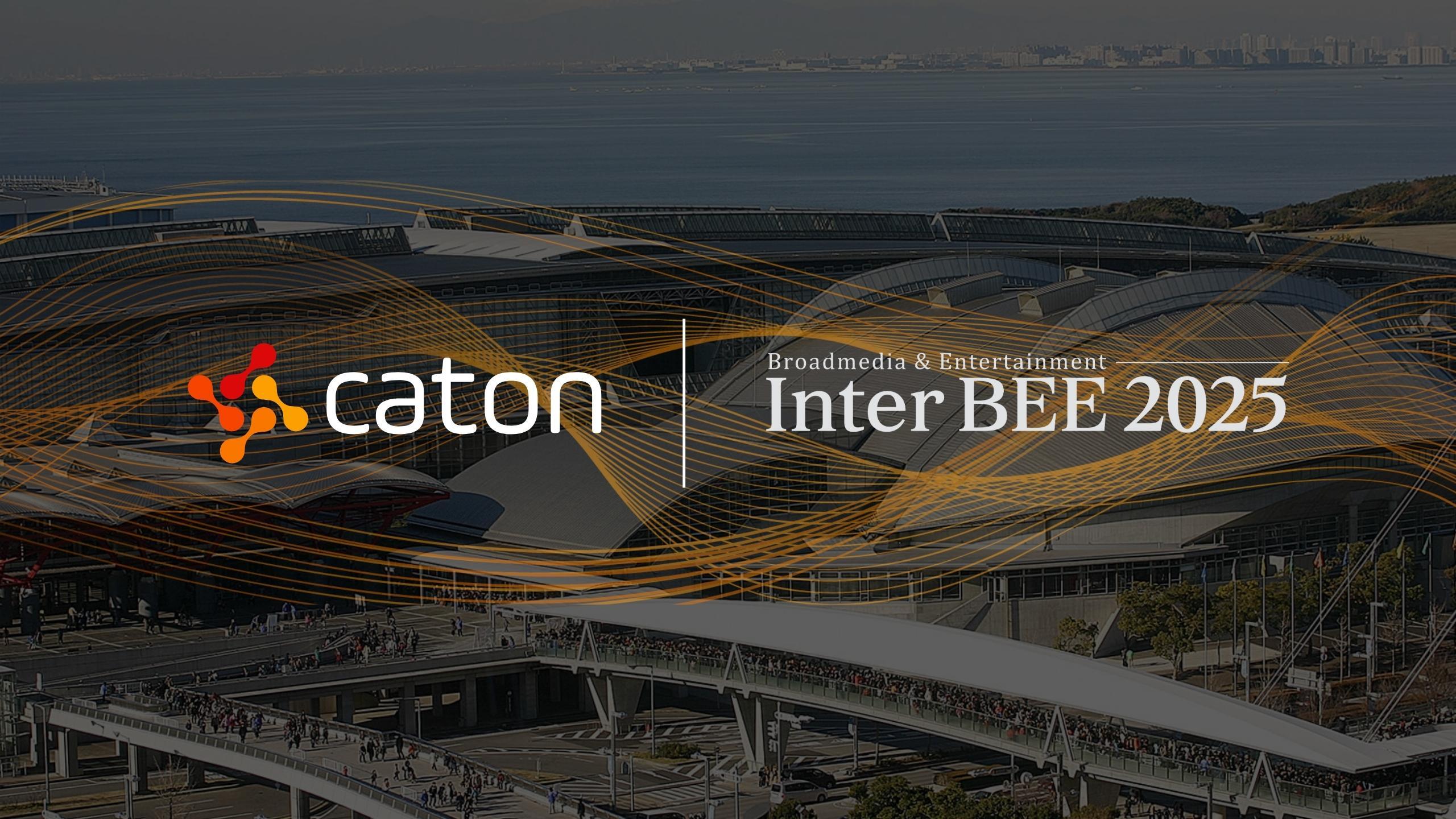Paul Weiser, Senior VP at Caton Technology, shares his thoughts with Jo Ruddock from SVG Europe on remote production, AI and machine learning and considers what might be next for the sports broadcast sector.

What are the challenges involved in remote production for live sporting events?
Whether it is a traditional production or some sort of remote workflow, the biggest challenge is always to get the signals from the venue to the home base. Remember that home base may be across town, or it may be on a different continent.
There is no longer enough capacity for satellites. It is old technology so no one is investing further, and the spectrum for C-band is being handed over for cellular use.
Major permanent venues will have dedicated, point-to-point fibre installed, although if you are looking at a large remote production, capacity may be an issue. The problem, though, is that it costs a lot to install that fibre and, if you only use it for an hour or two a week, the low utilisation means a high hourly rate. And network operators installing this dedicated fibre will need to be sure their investment is safe so will be looking at multi-year contracts.
Increasingly, the solution is the public internet. Most sports venues are in metropolitan areas, where there is likely to be plenty of dark fibre connectivity. You simply camp onto the capacity when you need it; and release it as soon as the event is over.
What are the key considerations for sports broadcasters when implementing a remote production?
The challenge of using the public internet for live television is that it relies on a bunch of standards, including IP, which were designed for something completely different. If you are sending an email it really does not matter if it arrives in 10 milliseconds or two seconds. In television we need a new picture 50 times a second, come what may.
It is vital that the transmission technology you choose is designed for live television. That means solving the issues around latency and jitter. It means understanding the need for consistent capacity – you really cannot tolerate the picture losing resolution just as the winning goal is scored. And it means providing a very high level of security, because you are opening up your production pipeline to the public internet, so you have to be very sure that it is not susceptible to any sort of intrusion.
Low latency and high quality are essential for sports. What solutions are available here?
Quality and consistency are the primary issues. You need to know that, whatever bandwidth you choose and whatever format you are carrying (which might be JPEG2000 for contribution or NDI for remote production), that it will be carried all the way from source to destination.
You may be confident that you have, say, 10Mb/s per channel leaving the venue, and the same bandwidth entering the remote production centre. But if there is a bottleneck somewhere in the internet routing which is only giving you 2Mb/s, then that is all you are going to get end to end.
So the first thing you have to do is manage bandwidth throughout the transmission. This will probably involve multiple paths over geographically diverse routes, to guarantee bandwidth all the way. That means micromanaging the network, which calls for very sophisticated automated tools.
Providing more than enough bandwidth is one key consideration. The second is eliminating glitches. The Caton platform has always been built on a powerful set of unique forward error correction (FEC) algorithms. This provides a very high degree of resilience against any perturbation in the circuit.
FEC, though, inevitably adds to the latency, as does the need to re-synchronise the parts of the stream which have travelled over different routes. Again, the key is to use technology that ensures the quality and security of the signal while minimising latency.
Caton has recently introduced Media XStream which harnesses AI and the cloud for real-time streaming. Tell us about this and the reaction of the industry to it.
Media XStream is a cloud-native service which provides transport over the internet, through the Caton Cloud architecture. Unlike standard cloud services which use a small number of very large data centres, the Caton Cloud architecture is focused on delivery of media so it uses a relatively large number of points of presence (PoP). The goal is to create a network of 1,000 or more PoPs, and pop-up PoPs can be added short-term by hosting them in traditional cloud centres.
Media XStream is fully meshed: there are paths between every PoP and every other. Signals can be routed in multiple ways. The more PoPs there are, the denser the network becomes, so more paths become available, and the network inherently becomes more resilient and capable.
Such a fully meshed network between a large number of nodes would be impossible to manage manually, so Media XStream embraces AI to manage networks. As well as creating configurations for very many concurrent streams, it monitors the health of every link in every path for all critical factors, with the ability to reroute a stream in less than 20 milliseconds.
With the advanced FEC, that means no glitches. We claim reliability that exceeds six nines for Media XStream. It also ensures that each circuit is tuned to be as fast as possible, minimising latency.
Final point on the Caton Cloud architecture. We provide APIs to allow third-party software to be embedded within it, and with the Caton Cloud Alliance we are forming alliances to combine key software into content flows. A great example of this is the integration of monitoring and multiviewing from TAG Video Systems.
What effect will artificial intelligence and machine learning have on the broadcast sector?
There are headlines – for good and ill – around the high-profile new services like ChatGPT. In truth, they have very little to bring to creative media production, and certainly in getting live sports to the viewer.
Where AI and ML have a real part to play is in providing proactive response to changing circumstances, far faster than a human operator could ever possibly achieve. At Caton we have built AI and ML into our transmission algorithms from the ground up, in the way we route signals, in the way we handle forward error correction, and the way we manage networks.
It may not grab the headlines, but our unique approach ensures our transport services consistently deliver unrivalled performance.
What are the key trends going forward?
Across the industry there is an assumption of a digital-first approach. Whatever the sporting event, the coverage will be inherently multi-format, from acquisition through to delivery. That means more media and more metadata to be carried securely and reliably, which is the Caton speciality.
What is also important is that, in parallel to the highly sophisticated digital-first approach to major sports, high-performance delivery and remote production is opening up many more events. Niche sports are now being covered which never received television recognition before; lower tiers of the main sports are also getting television exposure.
IP contribution and remote production are transformative. As well as enhancing ever more the digital-first, high-quality coverage of the top events, it is bringing democratisation across all sports. That is a very good thing.
This article first appeared online with SVG Europe
Do you know of someone who may be interested in this? Share it via:








